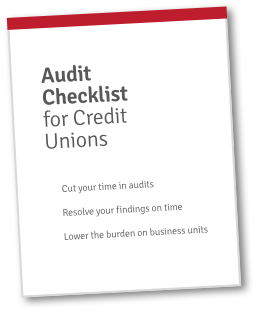According to a study commissioned by the Credit Union National Association (CUNA), credit unions’ regulatory costs have increased by $1.7 billion since 2010. In that span, CUs have seen a 91 percent increase in staff time spent on regulatory activities. That’s something that credit union CEOs are paying attention to.
Obviously, the content of examination responses is crucial. But regulators also pay significant attention to the process of the response. They scrutinize how credit unions prepare a response, where the information came from, whom the credit union talked to, and the consistency of responses over time.
The credit union executives we have spoken with have found a method to help address regulators’ concerns: create an efficient, effective process that is easily audited. These credit unions found two key benefits with implementing such a process:
1) It answers a simple question: “What did we do?”
An effective process with a robust audit trail will ensure that the credit union and its executive management know whom their team talked to while preparing the response. They will be able to judge whether the team talked to the right people. And they will be able to identify the sources for the data used in the response.
Such a process should leave an audit trail that can answer a set of basic questions:
- Who has reviewed the regulatory request
- Who has reviewed it and didn’t respond
- Who has reviewed it and did respond
- Who approved the response
- Any other key steps taken in the response process
If you look back in two weeks, two months or even two years and ask, “Why did we respond that way?” you will have an answer.
2) It increases confidence.
The credit union will create more confidence in its response, from the credit union’s and the regulator’s perspective. Everyone involved will know how the credit union formulated its response. That level of detail will allow both the credit union and the regulator feel more confident.
Creating an efficient, effective and auditable process allows you to be confident in the face of a stressful and time-consuming regulatory examination. And perhaps more importantly, it will increase your regulators’ confidence, as well.







